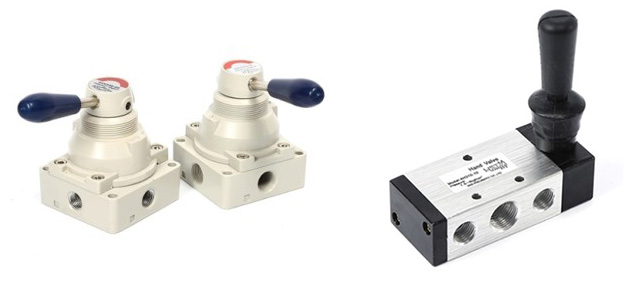What is a Hand Valve?
A hand valve is a type of valve that is manually operated, typically by turning a handwheel or lever. It's used to control the flow of fluids (liquids or gases) in a piping system. Hand valves are commonly found in various industries, including oil and gas, chemical processing, water treatment, and HVAC (heating, ventilation, and air conditioning) systems.
Hand valves can come in different designs, such as globe valves, gate valves, ball valves, or butterfly valves (BF valves). The choice of valve type depends on factors like the pressure, temperature, and nature of the fluid being handled, as well as the specific application requirements. They are called "hand valves" because they are operated manually by hand, providing a simple and reliable means of controlling flow in a system. These valves are often used in situations where precise control or quick shutoff is needed, and where automated or remote-control systems are not necessary or practical.
Working Principle
The working principle of a hand valve is basically to change the position of the valve by manually operating the handwheel, handle, or lever, thereby controlling the fluid flow in the pipeline. Hand valves typically use a rotating or pushing mechanism to open, close, or regulate the fluid flow in the pipeline. The following are the working principles of types of hand valves:
- Plug valve: The plug valve moves the valve core by rotating the handwheel or handle, thereby changing the opening degree of the fluid channel. When the valve core rotates, the fluid can pass through the center hole of the valve body or bypass the center hole, thereby controlling the flow rate.
- Ball valve: There is a ball inside the valve body of the ball valve. When manually operating the ball valve, the ball will be rotated to the open or closed position. In the closed state, the ball will be sealed on the sealing surface of the valve body, preventing fluid from flowing through; In the open state, the sphere will rotate to a position, allowing fluid to pass through the valve body.
- Gate valve: Gate valve controls fluid flow by moving the valve plate (gate) up and down. When manually operating the handle, the valve plate will rise or fall, thereby opening or closing the pipeline. Gate valves are typically used in applications that require high flow rates, as their valve design can provide lower flow resistance.
- Globe valve: Globe valve controls fluid flow by rotating the valve core. The globe valve core usually has a vertical hole. When manually operating the handle, the position of the hole is adjusted by rotating the valve core to control the opening degree of the fluid channel.
Application
Hand valves have a wide range of applications in industrial and commercial fields, and common application scenarios include:
Fluid control system: Hand valves are used to control the flow of various types of fluids (liquids or gases) in pipeline systems, such as water treatment systems, water supply systems, oil and gas pipelines, chemical production, etc.
Processing equipment and machinery: Hand valves are often used in processing equipment and machinery to control the flow of hydraulic or pneumatic systems, such as hydraulic machinery, pneumatic equipment, etc.
Heating, ventilation, and air conditioning systems: Hand valves are used to control the flow of water, airflow, or steam in heating, ventilation, and air conditioning systems to regulate indoor temperature or air quality.
Laboratory and research equipment: In the research laboratory, hand valves are used to control the flow of gases or liquids in the experimental equipment for adjustment and control during the experimental process.
Safety system: Hand valves are also commonly used in safety systems, such as emergency shut-off valves, to quickly cut off fluid flow in emergency situations to prevent accidents from occurring.
Automobile and transportation: In automobiles and other transportation vehicles, hand valves are used to control brake systems, hydraulic transmission systems, etc., to achieve driver control of vehicle movement.
Overall, hand valves have important applications in various industries, businesses, and daily life, providing users with a simple and reliable way to manually control fluid flow. ATO provides a diverse selection of hand valves at competitive factory prices, ensuring excellent performance across the board. We welcome you to make a purchase.

